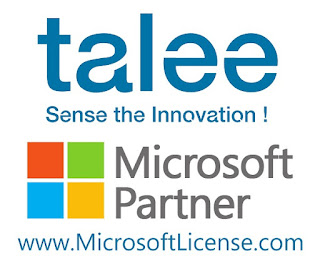Microsoft License
Navigating the Complex World of Microsoft Licensing: A Comprehensive Guide
Introduction:
Microsoft, a tech giant renowned for its software products, is a cornerstone of modern computing. From operating systems like Windows to productivity suites like Microsoft License Office, its offerings are ubiquitous in both personal and professional spheres. However, for many organizations, navigating Microsoft's licensing structure can be as complex as understanding its intricate software solutions. In this article, we delve into the world of Microsoft licensing, providing insights, explanations, and practical advice to help businesses make informed decisions.
Understanding Microsoft Licensing:
At its core, Microsoft License grants users the legal right to utilize Microsoft software products. However, the myriad of licensing options and agreements can be overwhelming. Microsoft offers various licensing programs tailored to different types of users and organizations, including enterprise customers, small businesses, educational institutions, and government agencies.
Volume Licensing:
- Microsoft's Volume Licensing programs cater to businesses purchasing multiple licenses, offering flexibility, cost savings, and centralized management.
- Options include Open License, Select License, Enterprise Agreement, and Subscription Agreement, each designed to accommodate different organizational needs and preferences.
- Benefits of Volume Licensing include access to the latest software versions, reduced costs through bulk purchases, and simplified software asset management.
Subscription-based Licensing:
- With the shift towards cloud computing, Microsoft has embraced subscription-based licensing models such as Microsoft 365 and Azure.
- Subscription licensing provides users with access to a range of Microsoft services, including Office applications, collaboration tools, cloud storage, and infrastructure services.
- Subscriptions offer scalability, regular updates, and enhanced security features, making them attractive for businesses seeking flexibility and modernization.
Product-specific Licensing:
- Microsoft offers product-specific licensing options for individual software products such as Windows, Office, SQL Server, and Visual Studio.
- These licenses may be perpetual or subscription-based, with pricing structures varying based on factors like usage, edition, and support level.
- Understanding the specific terms and conditions of each product license is crucial to ensure compliance and avoid potential legal issues.
Navigating Compliance and Optimization:
Compliance with Microsoft License terms is essential to avoid penalties and legal repercussions. However, staying compliant can be challenging, especially for organizations with complex IT environments and evolving software needs. Here are some strategies to navigate compliance and optimize licensing:
Conduct Regular Audits:
- Regularly audit software usage and licensing agreements to ensure alignment with organizational requirements and Microsoft's licensing policies.
- Utilize software asset management tools to track licenses, installations, and usage data accurately.
Engage with Microsoft Partners:
- Work closely with certified Microsoft Partners or Licensing Solution Providers (LSPs) to gain expert guidance on licensing options, optimization strategies, and compliance requirements.
- Partners can assist in assessing licensing needs, negotiating agreements, and implementing solutions tailored to specific business objectives.
Embrace Software Asset Management (SAM):
- Implement robust Software Asset Management (SAM) practices to proactively manage software assets, optimize usage, and mitigate compliance risks.
- SAM frameworks help organizations streamline license management, track software entitlements, and ensure cost-effective utilization of Microsoft products.
Leverage Microsoft Tools and Resources:
- Take advantage of Microsoft's licensing tools and resources, such as the Microsoft License Advisor and Product Terms documentation, to understand licensing options, calculate costs, and stay informed about updates and changes.
Conclusion:
Navigating the complex landscape of Microsoft licensing requires careful consideration of organizational requirements, compliance obligations, and optimization opportunities. By understanding the various licensing programs, engaging with certified partners, and implementing robust software asset management practices, businesses can effectively manage their Microsoft license, maximize value, and ensure compliance with legal and contractual obligations. In an era of rapid technological advancement and evolving business needs, staying informed and proactive in managing Microsoft licensing is essential for maintaining competitiveness and driving innovation.
Website: https://microsoftlicense.com/
https://www.behance.net/gallery/195405435/Microsoft-License




Comments
Post a Comment